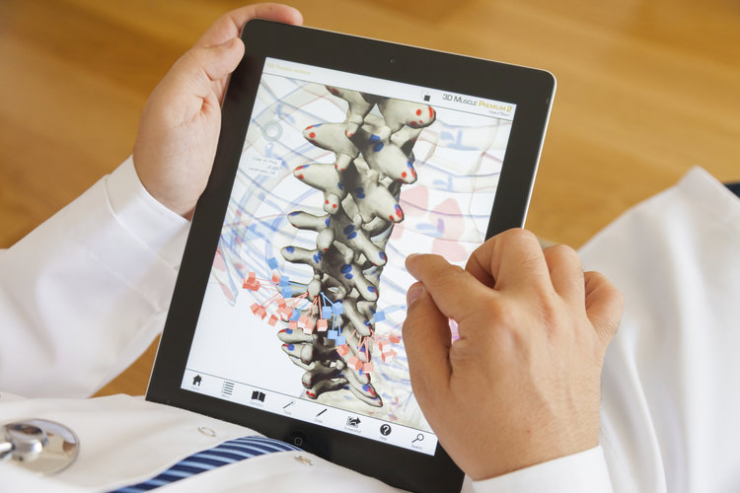Closely-held Parvus Therapeutics is developing a broad therapeutic platform, called Navacims, to treat autoimmune diseases through in vivo expansion and activation of disease-specific regulatory T-cells (T-regs), which normally play a key role in maintaining immune system balance and immune tolerance.
“We have extensive preclinical proof-of-concept data, with in vivo reversal of disease in mouse models of Type 1 diabetes, multiple sclerosis and rheumatoid arthritis,” CEO, Janice LeCocq, says in an interview with BioTuesdays.com.
“Furthermore, our extensive animal safety studies have shown no off-target affects, no general immune suppression and no cytokine release syndrome,” she adds. “Navacims are designed to halt the disease without negatively affecting the body’s normal immune functions.”
Dr. LeCocq explains that a Navacim is composed of a nanoparticle coated with multiple copies of a disease-relevant pMHC, a major immune system protein that functions as bait for pathogenic T lymphocytes involved in the disease of interest.
Upon binding to a pathogenic T lymphocyte that recognizes the bait, she says the Navacim reprograms that lymphocyte towards a disease-suppressing T-reg cell and, in addition, promotes its expansion.
The Navacim needs to address only one of the multiple antigens that are involved in the autoimmune attack leading to a specific autoimmune disease, she adds.
Navacims are used to treat autoimmune diseases through in vivo expansion and activation of disease-specific regulatory T-cells (T-regs), which normally play a key role in maintaining immune system balance and immune tolerance.
“The T-regs induced by the Navacim, despite being specific for just one antigen, suppress all the other immune cells partaking in that disease by specifically suppressing the local white blood cells responsible for their activation. As a result, Navacims selectively inhibit the disease of interest, restoring immune homeostasis, without causing systemic immunosuppression.”
In other words, she says nothing happens if a Navacim designed to address rheumatoid arthritis is used in a multiple sclerosis model, and vice versa, for example.
“We know of no other therapies, currently on the market or in development, that cause expansion of disease-specific T-regulatory cells in the body,” she contends. “Our platform has the potential to generate multiple first-in-class breakthrough therapeutics for the treatment of autoimmune diseases.”
Autoimmune diseases result from a failure of the body’s immune system to selectively attack foreign molecules, such as components of viruses and bacteria, while ignoring normal molecular components of the tissues in our body. In autoimmune diseases, the immune system misfires, attacking normal tissues and organs, causing diseases such as Type 1 diabetes and multiple sclerosis, to just name two of the approximately 80 other autoimmune diseases.
“We believe that Parvus has a powerful and completely novel solution because Navacims are designed to restore immune tolerance, or the immune system’s ability to halt autoimmune diseases without suppressing normal immunity,” Dr. LeCocq points out.
Dr. LeCocq explains that Parvus has a growing patent estate to cover the methods of use in disease indications and composition of Navacims.
The company’s initial indication is Type 1 diabetes, which was the focus of Dr. Pere Santamaria’s research when he discovered Navacims. Dr. Santamaria is Parvus’ founder and CSO.
New cases of Type 1 diabetes have been increasing by 2% to 5% worldwide, with estimated treatment costs of $7-billion currently. The disease is now treated with insulin injections.
Parvus also is developing a Navacim to reverse multiple sclerosis, which is characterized by damage to the myelin sheath around axons in the CNS.
Dr. LeCocq points out that the company has an initial development plan in place for Type 1 diabetes that is part of advanced discussions with potential partners. “We are hopeful that we will have a first partnership in place by yearend.”
Production and scale-up of the pMHC protein and nanoparticles is underway at contract manufacturing organizations, she adds.
In addition to Type 1 diabetes, Parvus also is developing a Navacim to reverse multiple sclerosis, which is characterized by damage to the myelin sheath around axons in the CNS. Like the coating around an electrical wire, myelin insulates and protects the axon and helps speed nerve transmission.
Using a mouse model of MS, Dr. LeCocq notes that the company has compelling evidence indicating the MS-Navacim can reverse the paralyzing effects of the disease in mice.
The Parvus approach to reverse autoimmune disease was featured in the peer-reviewed journal, Nature, in February. It provided important validation of the body of work by Dr. Santamaria during the past eight years.
In a statement, he said the Parvus platform offers a pharmaceutical solution to the fundamental problem of blunting the complex response of the immune system against the body’s own tissues, without suppressing the normal components of the immune system to protect the body against infection or cancer.
“Our goal is to get to proof-of-concept as quickly as possible. If we can demonstrate this works in one disease, people will recognize how incredibly powerful this platform can be for other autoimmune diseases,” Dr. LeCocq says.







